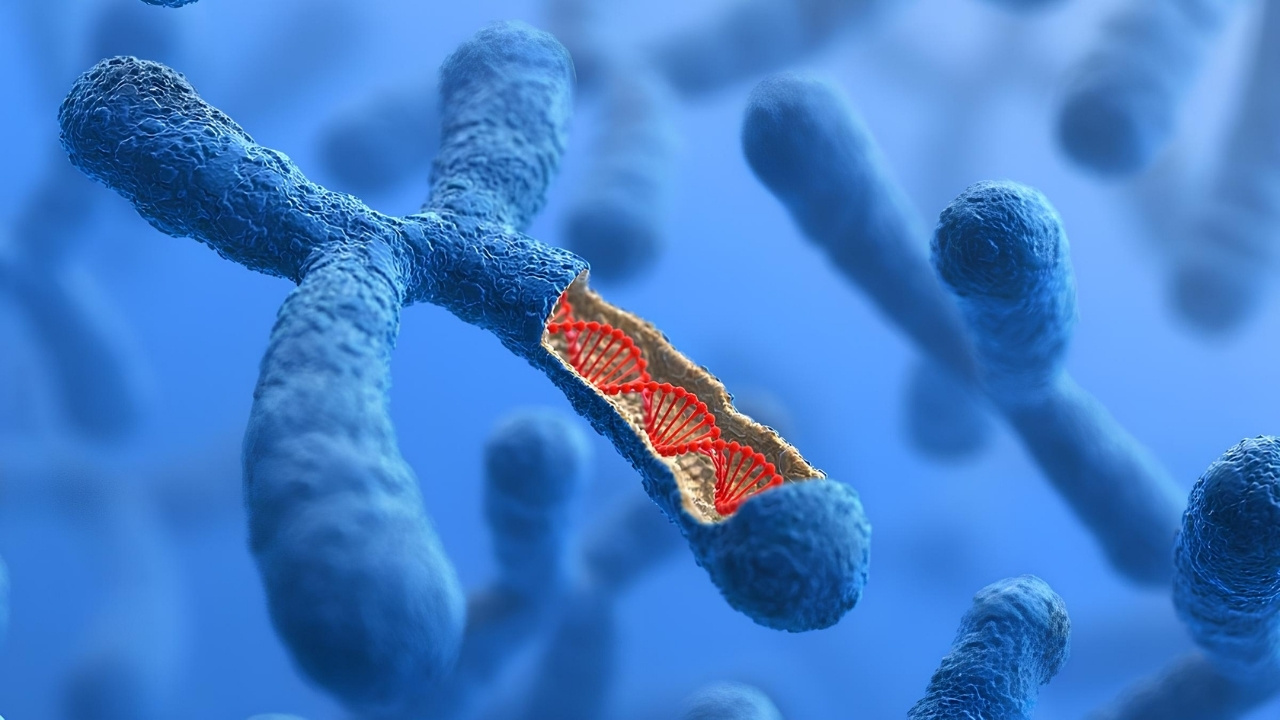
X-chromosome inactivation is a fascinating process that ensures females, with their two X chromosomes, don't produce double the amount of X-linked gene products compared to males, who have only one X chromosome. This biological balancing act, known as dosage compensation, occurs early in embryonic development. One of the two X chromosomes in each cell is randomly "turned off," or inactivated, forming a structure called a Barr body. This inactivation is crucial for normal development and prevents potential genetic disorders. Ever wondered why calico cats have their unique patchwork fur? It's all thanks to X-chromosome inactivation! Dive into these 32 intriguing facts to understand more about this essential genetic phenomenon.
What is X-Chromosome Inactivation?
X-chromosome inactivation is a fascinating process that occurs in female mammals. It ensures that females, who have two X chromosomes, don't produce double the amount of X-linked gene products compared to males, who have only one X chromosome. This process is crucial for normal development and cellular function.
- X-chromosome inactivation happens early in embryonic development.
- It was first discovered by British geneticist Mary Lyon in 1961.
- The inactivated X chromosome is called a Barr body.
- This process is random in each cell, meaning either the maternal or paternal X can be inactivated.
- Once an X chromosome is inactivated in a cell, all its daughter cells will have the same X inactivated.
How Does X-Chromosome Inactivation Work?
The mechanism behind X-chromosome inactivation is complex and involves several steps. Understanding these steps helps us appreciate how finely tuned our genetic systems are.
- The X-inactivation center (XIC) on the X chromosome plays a key role in this process.
- A gene called XIST (X-inactive specific transcript) produces RNA that coats the X chromosome to be inactivated.
- This RNA coating leads to the chromosome becoming tightly packed, or heterochromatic.
- Epigenetic modifications, such as DNA methylation and histone modification, help maintain the inactivated state.
- The inactivated X chromosome is largely silent, meaning most of its genes are not expressed.
Why is X-Chromosome Inactivation Important?
X-chromosome inactivation is vital for balancing gene expression between males and females. Without it, females would have twice the amount of X-linked gene products, which could be harmful.
- It prevents dosage compensation issues, ensuring gene products are balanced.
- Some genes escape inactivation and are expressed from both X chromosomes.
- This process is crucial for normal development and preventing diseases.
- Turner syndrome (45,X) and Klinefelter syndrome (47,XXY) are examples of conditions related to abnormal X-chromosome numbers.
- X-chromosome inactivation can influence the severity of X-linked diseases.
Interesting Facts About X-Chromosome Inactivation
There are many intriguing aspects of X-chromosome inactivation that highlight its complexity and importance in biology.
- Calico cats are a classic example of X-chromosome inactivation. Their patchy fur color results from different X chromosomes being inactivated in different cells.
- In humans, female carriers of X-linked recessive disorders can show symptoms if the X chromosome with the normal gene is inactivated in many cells.
- Skewed X-inactivation can occur, where one X chromosome is preferentially inactivated in a majority of cells.
- Imprinted X-inactivation happens in marsupials, where the paternal X chromosome is always inactivated.
- Reactivation of the inactivated X chromosome can occur in certain conditions, such as in the development of germ cells.
Research and Future Directions
Research on X-chromosome inactivation continues to uncover new insights and potential applications in medicine and genetics.
- Scientists are exploring how X-chromosome inactivation can be manipulated for therapeutic purposes.
- Understanding this process can help in developing treatments for X-linked diseases.
- Stem cell research benefits from knowledge about X-chromosome inactivation, especially in creating female stem cell lines.
- Cancer research is also impacted, as X-chromosome inactivation patterns can influence tumor development.
- New technologies, like CRISPR, are being used to study and potentially correct issues related to X-chromosome inactivation.
Fun Facts and Trivia
Here are some fun and lesser-known facts about X-chromosome inactivation that might surprise you.
- Female tortoiseshell cats also exhibit X-chromosome inactivation, similar to calico cats.
- Lyonization is another term for X-chromosome inactivation, named after Mary Lyon.
- Some plants also exhibit a form of X-chromosome inactivation.
- Mosaicism in females, where different cells express different X chromosomes, can lead to unique genetic traits.
- X-linked color blindness can show varying degrees of severity in females due to X-chromosome inactivation.
- Twin studies have shown that X-chromosome inactivation patterns can differ even in identical twins.
- Epigenetic therapies are being developed to target X-chromosome inactivation for treating certain genetic disorders.
Final Thoughts on X-Chromosome Inactivation
X-chromosome inactivation is a fascinating process that ensures genetic balance between males and females. This mechanism, discovered by Mary Lyon, plays a crucial role in development and health. It explains why calico cats have their unique fur patterns and why some genetic disorders manifest differently in males and females. Understanding this process helps scientists develop better treatments for diseases linked to the X chromosome.
The randomness of which X chromosome gets inactivated adds another layer of complexity to genetics. This randomness can lead to varied expressions of traits and conditions, even among identical twins. As research continues, we’ll likely uncover even more about how X-chromosome inactivation influences our biology.
Stay curious and keep exploring the wonders of genetics. The more we learn, the better we can understand the intricate tapestry of life.
Was this page helpful?
Our commitment to delivering trustworthy and engaging content is at the heart of what we do. Each fact on our site is contributed by real users like you, bringing a wealth of diverse insights and information. To ensure the highest standards of accuracy and reliability, our dedicated editors meticulously review each submission. This process guarantees that the facts we share are not only fascinating but also credible. Trust in our commitment to quality and authenticity as you explore and learn with us.
